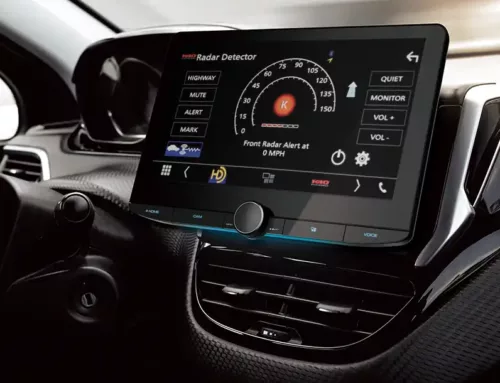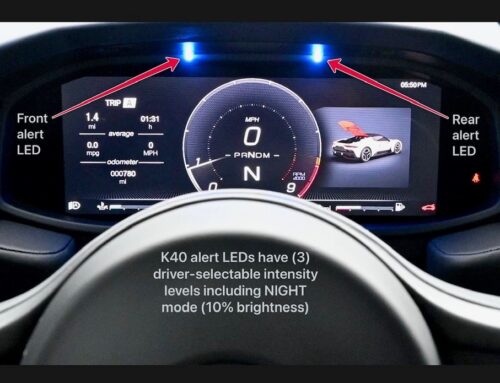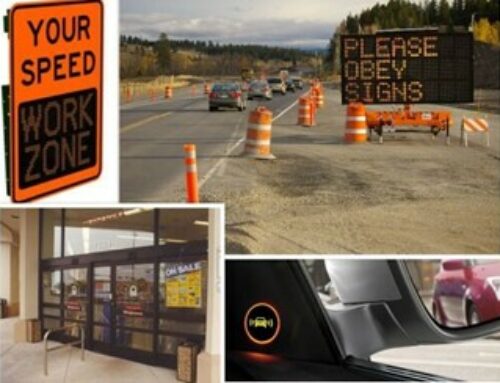Fuzzbuster, Snooper, K40… Oh My!
November 14, 2019
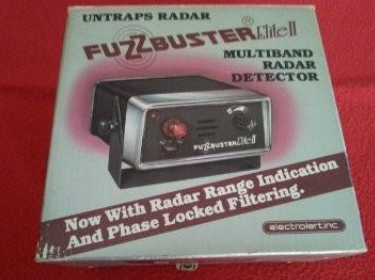
Let’s start at the beginning. In the early 1950s, police began using a Doppler effect radar system to catch speeders. The very first band used was S-band (2.445 GHz). This device allowed police officers to detect a vehicle’s speed with relative accuracy without the driver’s knowledge. It was a revenue revolution.
The cat had been released, and it was hunting. It wasn’t until 1958 that the amateur radio magazine CQ ran an article about a “Radio Speedometer Receiver.” With that, the idea for the radar detector was born. This device was then modified in the early 1960s for use in automobiles and eventually became the first radar detector, known as the Radar Sentry by Radatron. Although engineered to detect S-Band (no longer in use) and X-band (10.525 GHz), this early technology had a minimal range.
When were Police Radar Detectors Invented?
In 1968, a disgruntled receiver of a speeding ticket and electronic engineer named Dale Smith (Ohio) invented the Fuzzbuster, which became the most popular defense against speeding tickets of its time in the ongoing cat and mouse game between police and drivers.

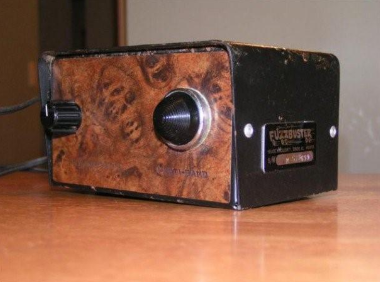
The unit, manufactured by Electrolert, detected x-band (the only band used by police at the time) and featured both an audible and visual alert to police radar. The Fuzzbuster had a good enough range to make it a top-rated and commercially successful product, selling for around $100.
The mouse was no longer defenseless. In 1974, the Federal Department of Transportation lowered the national speed limit to 55 mph. Then, in 1976, the FCC allocated K-band (24.125-24.150 GHz) for police radar enforcement use. Radar detectors and CB radio sales skyrocketed. The high demand brought many new players to the game.
In the mid-’70s to mid-’80s, this was a huge market with many players, such as:
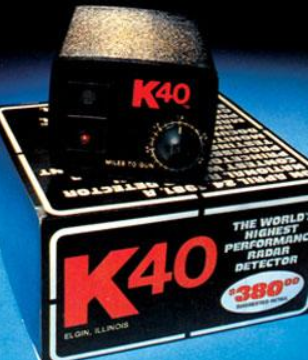
K40 Electronics came into the game with a game-changing CB Antenna in 1978 and introduced its first radar detector in 1981. This dash-mounted unit detected both X and K-band police radar and weighed almost 3 lbs!
In 1983, the FCC allocated the spectrum from 34.2-35.2 GHz for police radar enforcement use, and this became KA-band. Finally, in 1992 the FCC expanded the KA-band spectrum to 33.4-36.0 GHz.
What’s happening with police radar today?
Today, X-band police radar enforcement is almost non-existent. You might run across an X-band encounter in New Jersey, Ohio, or very rural small towns, but it’s pretty rare.
K-band is still around and used by police and, unfortunately, by many other sources, making it the “frequency of falses.” Sources of non-police K-band include automatic door openers, bank security systems, farm implements, and railroad crossing signals. But the biggest source by far is the vast amounts of vehicles on the road with radar-based safety features such as Collision Avoidance, Blind Side Assist, and Lane Departure Warning.
Today, there are only a handful of manufacturers left in the game. K40 has been a trailblazer in this industry with many firsts such as The first Ticket-Free Guarantee in 1983. Still in effect today, this guarantee covers all K40 products and guarantees to pay for any and all speeding tickets received in the first year of ownership (excludes tickets in construction or school zones or in conjunction with a DUI/DWI).
The first custom-installed remote radar detector. This was the first radar detector system that hid most of the components, except for an externally mounted control head. The tagline: “No plugs, no wires, no box on your dash. If you get a ticket, we’ll give you the cash!” This system maintains the elegant interior of all vehicles.
The first front and rear radar detection system. In 1986, K40 introduced the Sonarradar™. Having front and rear radar receivers and directional awareness for drivers was a game-changer.
The first “undetectable” radar system. In 1988, in an attempt to further the stealth integration, K40 replaced the control head with a small knob that could be hidden anywhere the driver chose, and two alert LED’s were added, usually in the instrument cluster. A lifetime theft guarantee was also added.
The first super-wide receivers. In 1993, K40 again upped the competition by offering the first remote installed radar receivers to receive ALL police radar frequency ranges, approved by the FCC for police speed enforcement.
The first Laser Defuser. In 1994 Police laser guns were beginning to gain popularity with law enforcement. K40 brought the first laser “jammer” to market, and a whole new countermeasure industry was born.
Today’s radar detectors bear little resemblance to their predecessors. With the addition of GPS technology, they are quieter, have better selectivity and sensitivity, and are programmed for each vehicle and driver’s preferences.
What does the future hold for radar detectors?
As always, K40 will keep its eye on emerging technologies, and its engineers are hard at work to stay one step ahead in this long, storied cat and mouse game.
If you would like to learn more about how K40 has been protecting drivers since 1978, please call us anytime at 800-323-5608.


